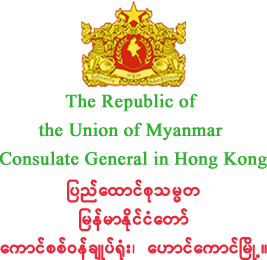MYANMAR is a new and emerging tourist destination in South East Asia. Known to most travelers as the Golden land, Myanmar is rich in cultures and natural attractions. There are numerous pagodas, temples, beauty spots, archaeological sites, snow-peaked mountains, deep forests with abundant flora and fauna, rivers and natural lakes, beautiful beaches and archipelagos, 135 national races with their colourful costumes and customs, traditional arts and crafts all make up Myanmar the most exotic and fascinating destination in Asia. Visitors will find Myanmar a beautiful and peaceful place with the most hospitable people in the world.
Myanmar is situated in Southeast Asia and is bordered on the north and northeast by China, on the east and southeast by Laos and Thailand, on the south by the Andaman Sea and the Bay of Bengal and on the west by Bangladesh and India. It is located between latitudes 09° 32' N and 28° 31' N and longitudes 92° 10' E and 101° 11' E.
GEOGRAPHY
The country covers an area of 677,000 square kilometres (261,228 square miles) ranging 936 kilometres (581 miles) from east to west and 2,051 kilometres (1,275 miles) from north to south, It is a land of hills and valleys and is rimmed in the north, east and west by mountain ranges forming a giant horseshoe. Enclosed within the mountain barriers are the flat lands of Ayeyarwaddy, Chindwin and Sittaung River valleys where most of the country's agricultural land and population are concentrated.
CLIMATE
As a whole, the location and topography of the country generated a diversity of climate conditions. Seasonal changes in the monsoon wind directions create summer, rainy and winter seasons. Extremes of temperature are rare. The directions of winds and depression bring rain, and although it is always heavy in the coastal areas during monsoon season, it seldom creates hardships. The Government is giving priority to the forest conservation and greening of nine arid districts in central Myanmar.
FLORA AND FAUNA
Myanmar is endowed with a rich diversity of habitat types arising largely from its unusual ecological diversity. It is home to nearly 300 known mammal species, 300 reptiles and about 100 birds species, and a haven for about 7,000 species of plant life. Since Myanmar considers such a rich pool of bio diversity as an important national asset, the Government has drawn up strict regulations to protect its biological resources.
POPULATION
Myanmar is made up of 135 national races, of which the main national races are Kachin, Kayah, Kayin, Chin, Bamar, Mon, Rakhine and Shan. Population of the country is estimated at 51.4 million (July, 2013) and the population growth rate is 1.84 percent.
ADMINISTRATIVE DIVISIONS
There are 7 Regions and 7 States in Myanmar.
Regions: Ayeyawady, Bago, Magway, Mandalay, Sagaing, Taninthayi, Yangon.
States: Chin, Kachin, Kayah, Kayin, Mon, Rakhine, Shan

